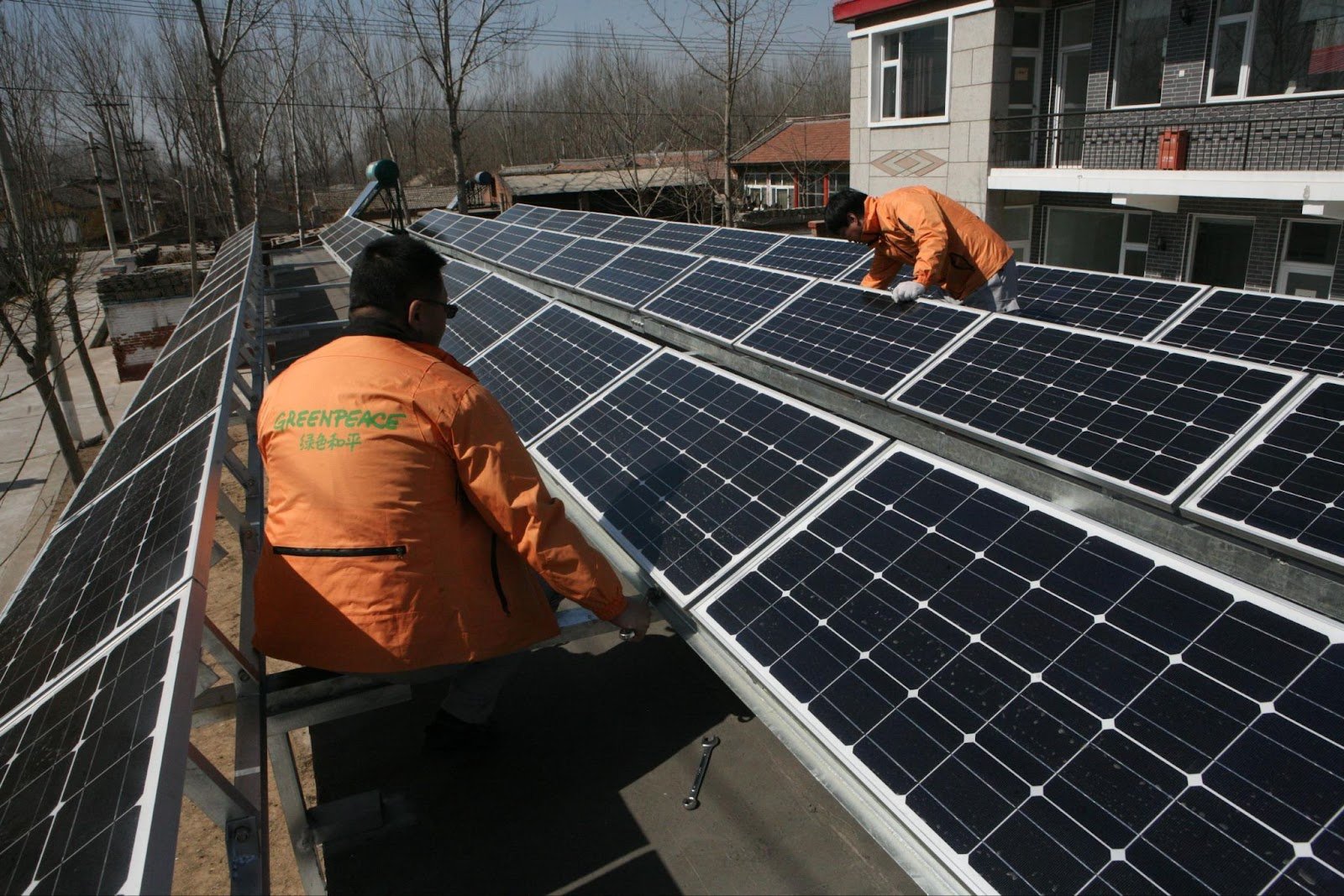TAIPEI, October 28, 2022 – Tech brands including Microsoft and Google have achieved 100% renewable energy across their own operations, but their supply chains are still fueled primarily by coal, gas and oil, according to a new report by Greenpeace East Asia and Stand.earth.
“Tech brands like Microsoft and Google have made progress toward greening their own operations, but their supply chains in Asia are extremely polluting. Suppliers that manufacture components of our cell phones and computers, such as TSMC and Samsung Electronics, primarily use electricity that is generated from coal and other fossil fuels. Brands like Microsoft and Google talk a lot about climate action, but in reality their supply chain carbon footprint has continued to grow. Consumer electronics brands must provide incentives and support for their suppliers to transition to renewable energy,” said Greenpeace East Asia campaigner Xueying Wu.
Researchers ranked decarbonisation efforts by 10 of the world’s top consumer electronics brands and 14 of their largest suppliers. [1] In 2021, the combined electricity consumption of all ranked companies exceeded 170,000 GWh, more than that of Argentina. [2] On average, 77% of electronics industry emissions are generated from the supply chain. [3]
Key findings:
– Suppliers to Microsoft, Google and other major consumer electronics brands rely heavily on fossil fuels. Researchers studied 14 of the largest suppliers to major consumer electronics brands and found that only four reported a renewable energy usage rate that exceeded 10%. In 2021, the median renewable energy usage rate for all 14 suppliers was 5%.
– Microsoft is backsliding on supply chain emissions. In 2020, Microsoft pledged to reduce its emissions, including its supply chain, by more than half within a decade. The following year, Microsoft’s supply chain emissions increased by 23%. [4]
– Apple is the only major tech company that has issued a 100% renewable energy target for its supply chain and has made significant progress toward this goal. However, Apple has not disclosed detailed energy and emissions data for its supply chain.
– In 2021, TSMC and SK Hynix, two semiconductor manufacturing giants that supply Apple and Microsoft, reported renewable energy usage rates of only 9% and 4%, respectively. By contrast Apple and Microsoft have all achieved 100% renewable energy across their own operations.
– Emissions from key semiconductor manufacturers are on the rise. Since 2019, emissions have increased from Samsung Electronics (26.1%), TSMC (17.5%), Intel (13.5%), and SK Hynix (11.7%), four of the world’s top semiconductor manufacturers by revenue. Collectively their clients include Apple, Microsoft and Google, among other brands.
Electricity use from the global tech sector is projected to grow by more than 60% between 2020 and 2030. [5]
“All electronics brands, including suppliers, must achieve 100% renewable energy by 2030. Consumer electronics brands should require their suppliers to set renewable energy and emissions reductions targets and create incentives to ensure that these goals are met. Suppliers must select high-impact renewable energy sourcing methods to meet their targets,” said Stand Earth Global Climate Campaign Director Gary Cook.


[END]
Report is available here. Media briefing is here.
Notes
[1] Samsung Electronics is a major consumer electronics brand and semiconductor manufacturer. For this reason, it appears in both the consumer electronics brand category as well as the supplier category of the report.
[2] IEA. (2022). Electricity Information. Retrieved September 20, 2022, from https://www.iea.org/countries/argentina
[3] World Economic Forum, & Boston Consulting Group. (2021). Net-Zero Challenge: The supply chain opportunity. Retrieved September 20, 2022, from https://www.weforum.org/reports/net-zero-challenge-the-supply-chain-opportunity/
[4] Smith, B. & Joppa, L. (2022). Official Microsoft blog published online March 10, 2022: ‘An update on Microsoft’s sustainability commitments: Building a foundation for 2030’. Retrieved September 14, 2022, from https://blogs.microsoft.com/blog/2022/03/10/an-update-on-microsofts-sustainability-commitments-building-a-foundation-for-2030/
[5] Andrae, A. S. G. A. (2020). New perspectives on internet electricity use in 2030. Engineering and Applied Science Letters. 3. 19-31.
Media Contacts:
Erin Newport, International Communications Officer, Greenpeace East Asia, +886 958 026 791, [email protected]
Emily Pomilio, Corporate Campaigns, Stand.Earth, +1 480 286 0401, [email protected]



